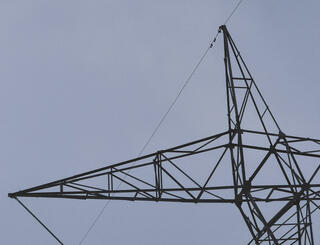Energy Prices 101: Electricity Pricing in Deregulated Markets

By Charlotte Caldwell, Sr. Analyst, Clean Energy
The price of electricity is primarily driven by the principles of supply and demand. Electricity cannot be stored easily on a large scale, so supply must constantly match demand. Many factors impact this balance, including:
- Fuel prices: The cost of fuel (natural gas, coal, nuclear, etc.) used to generate electricity
- Generation availability: The availability of power plants and their operational status (maintenance, outages) influence supply
- Weather conditions: Weather can impact both demand (e.g., heating in winter, cooling in summer) and supply (e.g., wind and solar generation)
- Regulatory policies: Government policies and regulations such as emissions regulations, renewable energy mandates, and tariffs can affect both the supply and demand of energy
- Market structure: The organization and rules of the electricity market, whether it is a regulated or deregulated market, impact pricing mechanisms
Market price formation
In organized electricity markets, the price of energy is often set by the marginal unit - the generator which supplies the next megawatt of electricity at a given moment. The marginal unit is typically the most expensive unit dispatched. This unit sets the market clearing price, ensuring that supply matches demand. Generators submit bids indicating the price at which they are willing to supply electricity. The market operator (such as an Independent System Operator or Regional Transmission Organization) dispatches generation starting with the lowest bids until demand is met. The price of the next unit to be dispatched (the marginal unit) becomes the market clearing price, which is paid to all generators supplying electricity at that moment. In most markets, there are various categories of pricing that are important to understand:
- Nodal price: The specific price at an individual location (node) on the grid, taking into account local supply, demand, and transmission constraints. All generators in the system have their own nodal price.
- Zonal price: The average price for a broader area within the market, reflecting the combined effect of multiple nodes within that zone
- Hub price: A representative price for electricity at a central location within a market, often used as a reference point
The price at a given point in the system is the location marginal price (LMP). LMPs reflect the cost of delivering electricity to a specific location, including three components: energy, losses, and congestion.
- Energy: The energy cost is the fundamental component of the LMP. It represents the marginal unit’s cost of generating electricity. This cost is influenced by the factors mentioned earlier, such as fuel prices, generation availability, and market dynamics.
- Losses: Electricity transmission is not perfectly efficient, and some energy is lost as heat during the process. To reflect the true cost of supplying electricity to a specific location, the cost associated with these losses is included in the LMP as the loss component.
- Congestion: Congestion occurs when there is insufficient transmission capacity to deliver electricity from where it is generated to where it is consumed without overloading the network. This creates a bottleneck, which can affect the cost of electricity in congested areas.
LMP = Energy Component + Congestion Component + Loss Component
Congestion pricing
The congestion component is a market mechanism that attempts to represent the cost of transporting power. The purpose of congestion pricing is to manage wear on the transmission system by providing financial incentive to relieve strained lines. Every transmission line has a limit for the power that it can safely carry and overworking a line can damage equipment and create safety hazards like fires and explosions. To prevent this, as a line approaches its limit, the congestion component of prices on either side of the line will increase or decrease.
For example, if a large amount of power is flowing from Point A to Point B, the congestion component will decrease at Point A and increase at Point B. The idea is that the higher price at Point B will incentivize more generators to turn on in that area, reducing the need for flows in that direction. Conversely, reducing the price at Point A could incentivize some generators to turn off, which would reduce the amount of electricity available to flow away from that point. Additionally, reducing demand via demand response programs at Point B can work to alleviate congestion by further reducing the need for flows from Point A to Point B.
Most instances of negative pricing in electricity markets are caused by congestion pricing. This happens when the need to reduce flows from Point A is so great that the congestion component is below the negative value of the energy component. In these cases, the generators at Point A would be paying the grid to continue operating.
In electricity markets, congestion is often misunderstood or misrepresented. When people refer to congestion, they are often thinking about extreme cases, when the congestion component makes the LMP much higher or much lower than the energy component. But the truth is more nuanced.
Though some congestion patterns persist for extended periods of time, congestion costs can change dramatically in just minutes. Common causes for short-term changes in congestion patterns are transmission outages, generator outages, changes in availability of wind and solar power, and short-term fluctuations in load. In the long term, congestion patterns may change due to the retirement or installation of large generators, new transmission infrastructure, or the addition of large loads, like those driven by new data centers.
Congestion examples
Figure 1 shows an example of a common form of congestion in the California ISO. With the significant amount of solar buildout in Southern California, often, during peak solar hours, power will flow from the south, with its cheap solar generation, to the north. This can lead to south to north congestion, where generation nodes in Southern California will experience negative congestion pricing to incentivize less generation while more northern nodes will experience positive congestion pricing to incentivize more generation or demand reduction in an attempt to reduce the flow of power in that direction.

Figure 1. CAISO Congestion Example. Shao, Yue & Zavala, Victor. (2019). Space-Time Dynamics of Electricity Markets Incentivize Technology Decentralization. ((PDF) Space-Time Dynamics of Electricity Markets Incentivize Technology Decentralization (researchgate.net))
A similar trend is present in ERCOT. The northern and western regions of Texas have plentiful wind capacity, but most of the demand in Texas is in the middle of the state and towards the Gulf, near Austin, San Antonio, and Houston. This often results in a gradient of pricing, with negative congestion pricing in the north and west that gets increasingly positive as it moves towards the southeast.
If you're interested in diving deeper into electricity pricing and how it impacts your energy strategy, please reach out to us via our Contact Page or email Charlotte Caldwell at charlotte.caldwell@trioadvisory.com.
